Want to double your sales? Build a group of huge fans? Skyrocket your store’s success?
Then you need to learn the secret hack the most successful eCommerce stores are using to sell more to their customers than ever before: email marketing.
Email marketing isn’t just the spam emails you delete (or ignore) before reading.
It’s a critical piece in any online store setup process.
When done correctly, email marketing can be your biggest tool to grow your email list, build a team of engaged customers, and create a system that generates more revenue than you could imagine.
Here’s the step-by-step details you need to build an email system that saves time and makes money all at once.
Start building your email list right away
Let’s start with this: you need to start building your email list from day one.
Sure, there are other things you could focus on. Social media, SEO, blogging, product descriptions, market analysis, market demand, offline promotion.
But it comes down to a simple fact. Your goal is to get people to your website to buy, right?
Email leverages that. People who sign up for your list have now said that you can email them when you decide what to sell when you run promotions, and when you price your product differently.
And you can turn a one-time customer into a loyal fan. Promoting your eCommerce store without some way to build your email list is almost a waste of time because your effort disappears after each sale.
While you can use all kinds of strategies to make your first sale, you’ll have to keep trying—since you need a constant stream of new customers.
With an email list, you can keep those customers around for years.
First, we’ll cover strategies to build your list. Then, we’ll tackle how you can use that list to sell more than you’ve ever thought possible.
Strategies to build to your email list
List building isn’t a simple process. You’ll need to dedicate time and energy into finding new subscribers that want to hear from you.
That said, there are a few ways to make things easier. Here they are.
Build a prelaunch list
Before you even launch your eCommerce store, you can start building up your email list.
In fact, I highly recommend setting up your eCommerce store alongside an email list system. Why? Because you’ll be able to collect email addresses while you build out the rest of the store.
Just a basic landing page is enough to start generating interest in your offer.
It doesn’t need to be buyers. Your initial list can just be family and friends who are interested. Ask people if you can sign them up, and do so.
But make sure you have a list.
As soon as you launch, you’ll be depending on those people to help spread the word.
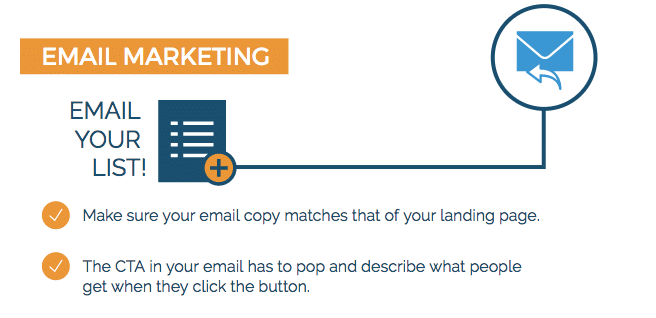
Use ads to drive traffic to landing pages
Using ads as part of your promotion strategy?
Then you need to make sure your landing page is a great fit. A landing page is a page with a goal of a single action.
Unlike your homepage, which might have several buttons to click, a landing page only has a few different options. If you’re building your email list, that landing page might just have one option: to sign up for the email list.
The biggest secret to making the landing page successful is to make sure it matches the ad in both its language and its design.
Air Canada does a great job with this. They talk about the summer of great fares and use a dark grey pattern.



And the landing page uses the same phrase and pattern on the header message.
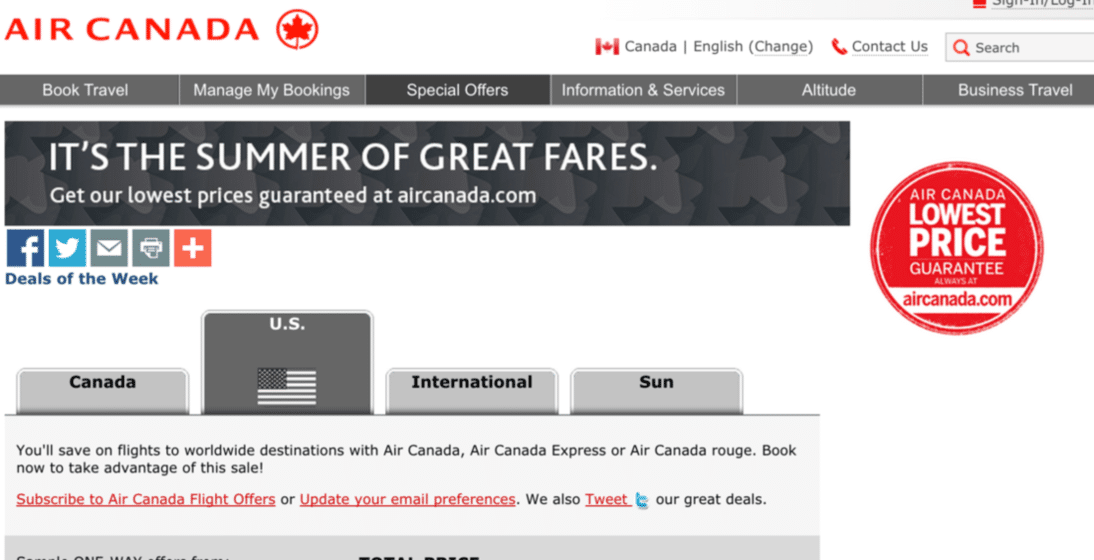


Keep the message and look closely aligned to increase sales and not confuse customers.
Next, you need to look into retargeted ads. This is a highly profitable type of ad for building your email list and selling more through your store.
The way it works is simple. If someone visits your store, you’ll tag that visit. The most common platforms for this are Facebook and Google Adwords.
Then, you’ll show related content after they’ve visited since you know they already know about your site. You can even target based on the pages they viewed.
You can target people who visited or purchased from your site with ads promoting your email list. (And in the process, drive a crazy number of sales.)
Watchfinder used retargeting ads to drive an insane 1,300% ROI.



Hold contests and giveaways on Social Media platform
If you pay attention to the promotions behind the largest brands, you’ll notice that a giant brand almost always has a major promotion or giveaway going on.
Why? Because they’re effective.
Here’s a promotion by M&Ms, promising a spot in their next ad.
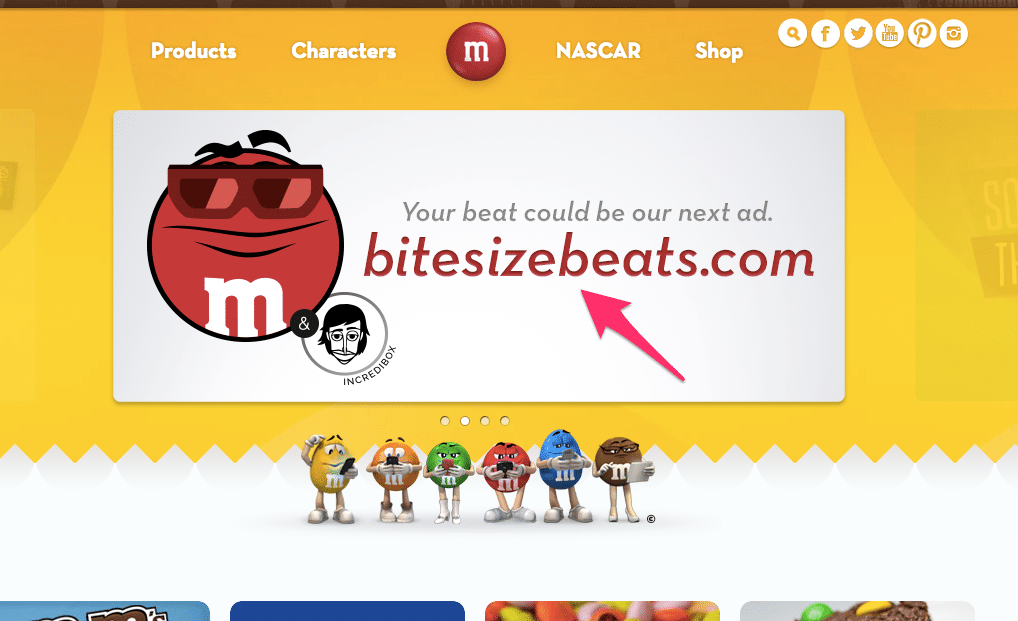


Since you have products and inventory, a giveaway can be a great way to start drumming up excitement for your store.
(A quick note of warning: most countries and regions have laws you need to follow for raffles and sweepstakes. Study those guidelines before starting any promotion like this.)
There are lots of ways you can run giveaways, from the simple to the complex. The simplest is to give it to a lucky winner who signs up for your email list during a given time.
But you can take it a step further with a program like Rafflecopter. It gives you tons of features for promoting your store and giveaway, and you can even offer special bonuses referral upgrades.
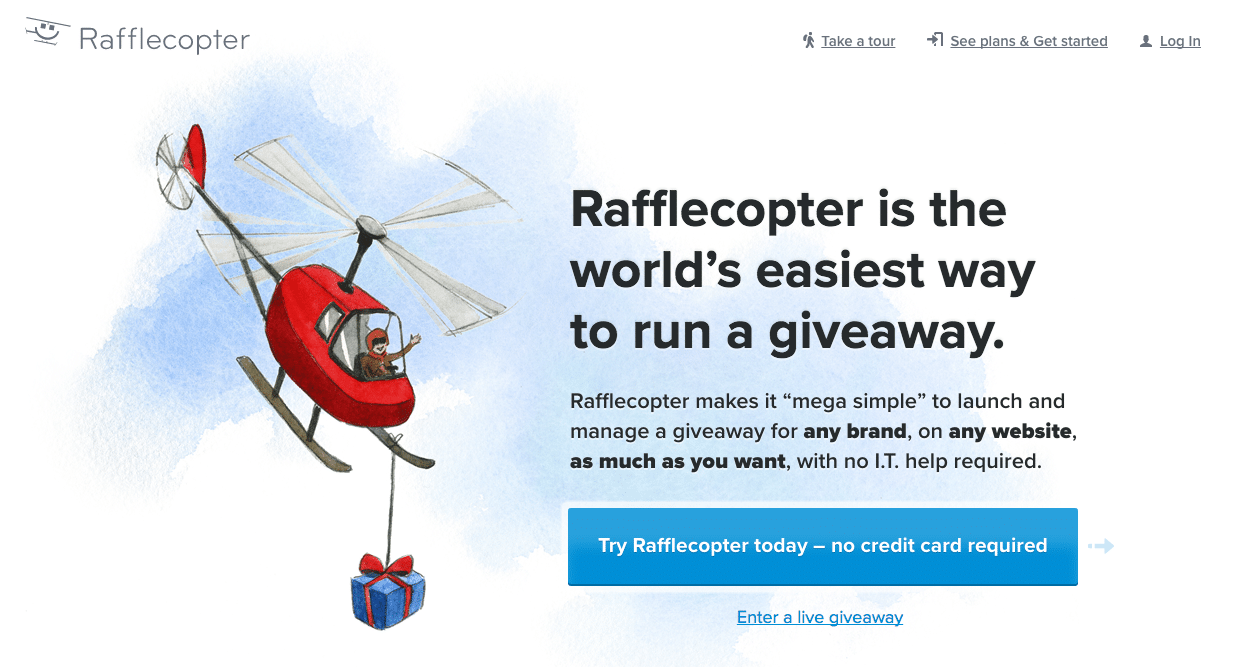


Giveaways work well because you’re targeting people who are interested in your product already, which means they’re more likely to buy.
Just make sure you tie it to your email list so you can contact everyone who signs up after the promotion has ended.
Have an email signup box in your site footer or sidebar
There are a few places on your website that are the same for every page.
Depending on your layout, they might include the sidebar, navigation menu, or footer. Because these sections show up across your site, it’s a good idea to include a small email signup box in the areas.
Here’s how Reebok does it—they just include a tiny one-line offer to sign up for their mailing list.
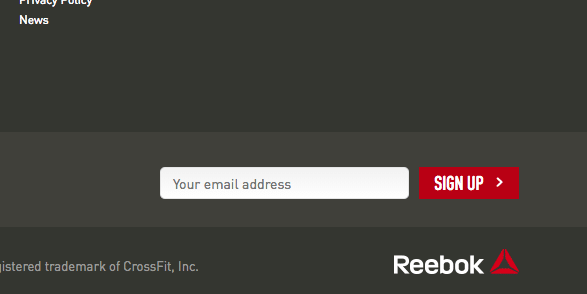


It’s a good idea to have this across your site because you never know when someone will decide to join your list.
It could be on a page with a unique product that they realize they want more updates—and without a place to sign up, you’ll lose out on that subscriber.
Offer discount codes in exchange for an email
One of the easiest ways to get new email subscribers as an eCommerce store is by offering discounts to people who visit your website.
A great example of this is Cheap Monday, which offers a 10% discount on your next order if you sign up for their newsletter.
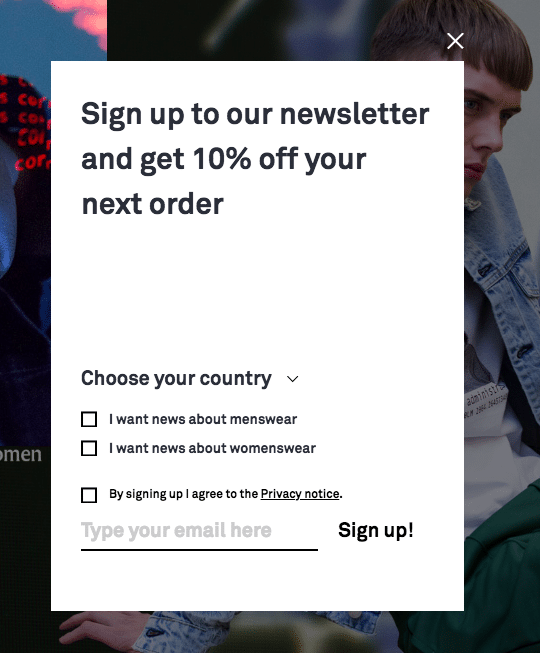


This is a simple and effective way to build your email list. If you have a certain amount of advertising money planned for each new customer (and you probably should), you can allocate this bonus from that figure.
Optimize your website opt-ins
No matter how good your offer is, you won’t get more subscribers unless your site is optimized to show the opt-in offer to new visitors.
To make this happen, you’ll need to adopt a few best practices to encourage signups to your list.
There are plenty of ways to increase your opt-ins, and more techniques are being invented every day—but the one that works, again and again, is a popup.
It works because the user needs to make a decision before moving on with his or her purchase. Here’s an example from Wrangler, this one offering free shipping for email signups.
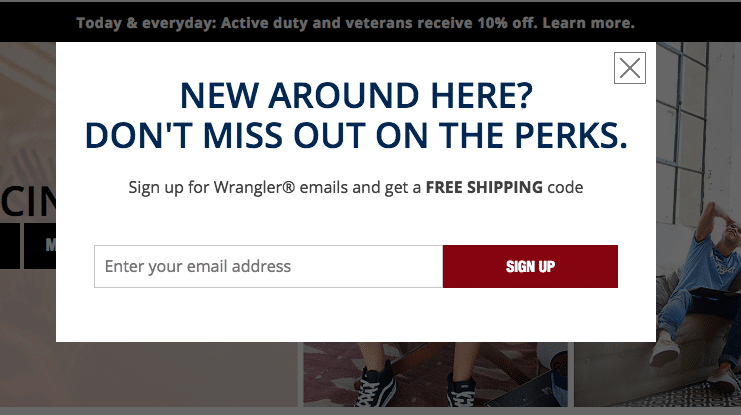


Try a few different types of opt-in forms and see which ones work the best for your site.
Provide subscriber-only bonuses
But what if you don’t want to—or can’t afford to—give away discounts for new subscribers? The answer is in extra content.
Instead of providing free or discounted products, provide information they can’t get anywhere else. This kind of promotion is called a “lead magnet” in the marketing industry because it’s a magnet for new leads.
You can use it for your eCommerce store as well.
A good way to use it is to offer a bonus shopping guide, how-to document, or other information product for free with a new email subscription. Since the product is digital, it’s free to deliver—but still draws in new customers.
You can create simple PDF checklists from existing blog content if you have a blog already. Or you can do customer research and learn what questions your potential customers have about your product.
These kinds of information products can do very well. RazorSocial used them and increased their opt-in rate by 520%.
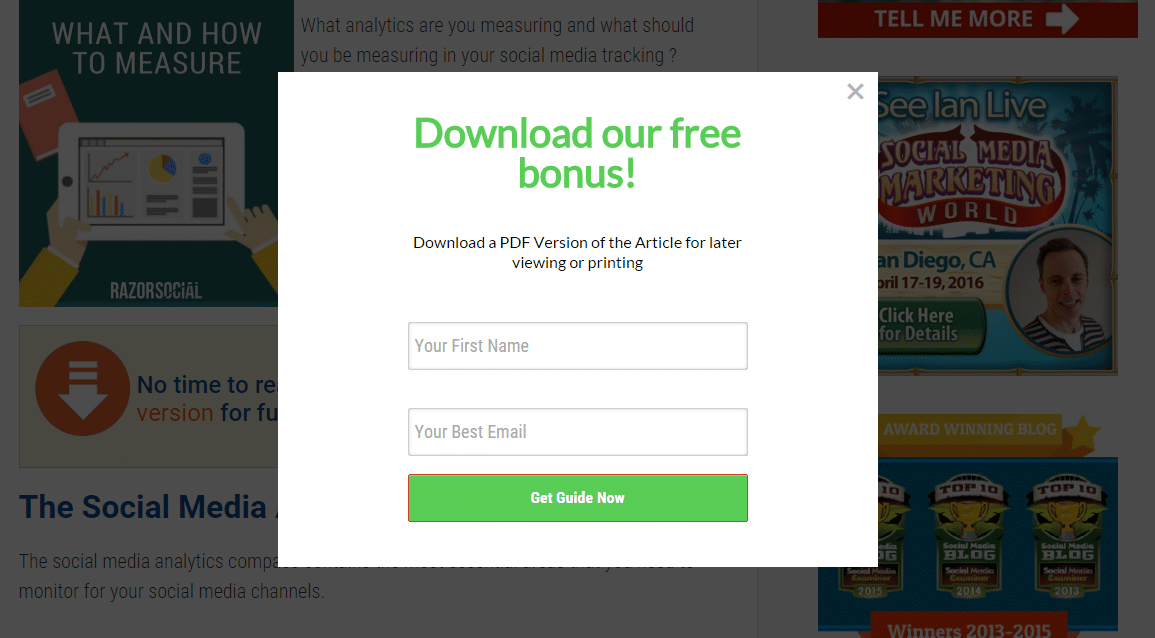


Once you understand how to appeal to customers with information and not discounts, the sky’s the limit.
Partner collaborations
The simplest way to get new email subscribers?
Leverage new partners.
This works because other partners—either in similar industries or related niches, but not your competitors—have lists of people eager to buy similar products.
And by doing promotion together, you can build each of your lists and sell more products. It’s a good idea to stick to partners about the same size as you, to keep the trading fair.
And make sure it’s a win-win-win for all parties involved—you, your partner, and the subscribers to both of your lists.
For example, if you sell homemade cigar cases, you could partner with a gourmet cigar store to offer a discount combo package.
You’ll earn new cigar case customers, your partner will earn more cigar customers, and the subscribers will be thrilled with a discount on a product they’re probably very interested in.
Another example is to use a social cause to help promote. Sock company Cole + Parker partners with Kiva microfinance company to help entrepreneurs around the world.
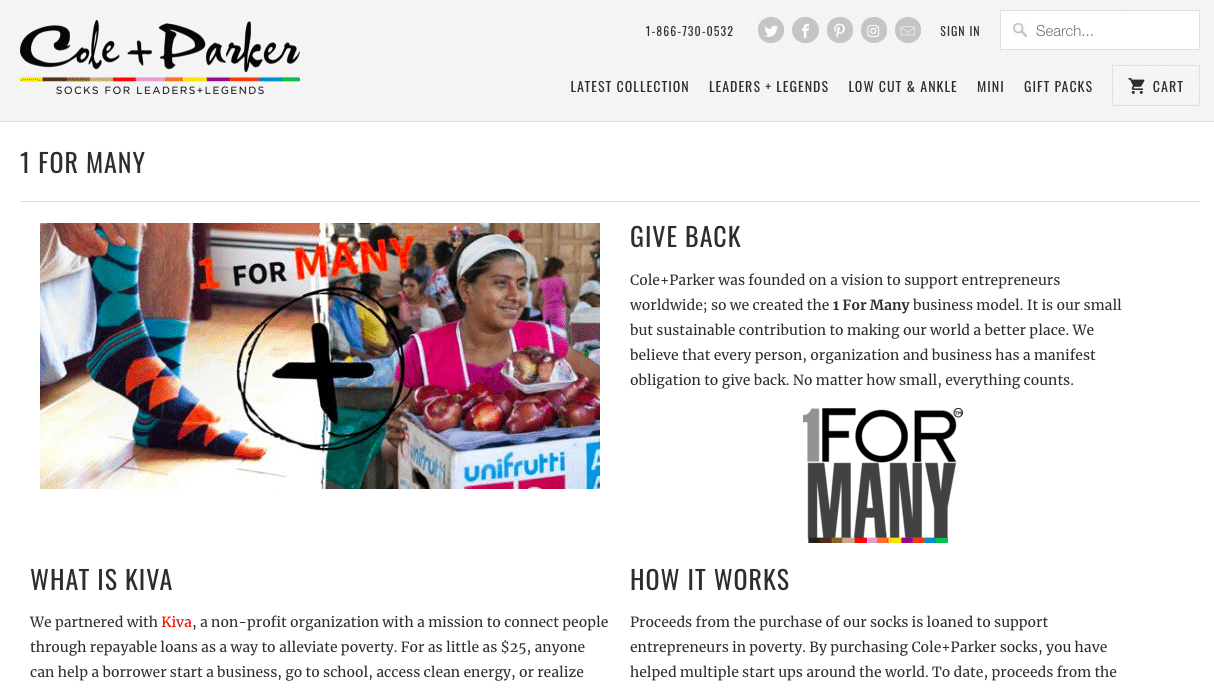


This means Kiva is motivated to help Cole + Parker succeed, and Cole + Parker wants to help Kiva share their message.
And along the way, subscribers are happy to spend more money on a company that uses a portion of their profits for good.
Collect emails at offline events
Finally, you can collect emails at offline events.
This might not be the best strategy for quantity, but sometimes the quality more than makes up for the few numbers of subscribers you get.
If you attend a trade show, for example, anyone who enters their email address isn’t just doing it for a free shipping discount or PDF checklist—they genuinely want to hear more from you about the products you have to sell.
It’s a great way to expand your business and reach out to real customers outside of the internet.
But enough of building your list.
Let’s start using it.
Leverage your email list to grow your business
Next, let’s dive into the tried-and-true strategies you can use to turn those subscribers into raving fans and customers.
You’ll need to take time to keep your list active, but that will pay off quickly. You’ll be able to convert casual browsers into buyers who are happy to spend more on your products than you thought possible.
Here’s how!
Target specific users with email segmentation
The fastest way to start making money from your list?
Email segmentation.
It’s a fancy term for a simple concept: sending different emails to different types of customers. When you think about it, you wouldn’t market to everyone in a physical store the exact same way.
You’d talk differently to different customers depending on what they were looking for, what they were planning to buy, or frustrations they had with your store.
It’s the same with an eCommerce store. You need to understand your customers’ different needs and approach them accordingly.
These segments will result in a better result for your email list and your bottom line. Research by MailChimp shows that segmented lists outperformed standard lists with 14% higher open rates and 101% better click rates.
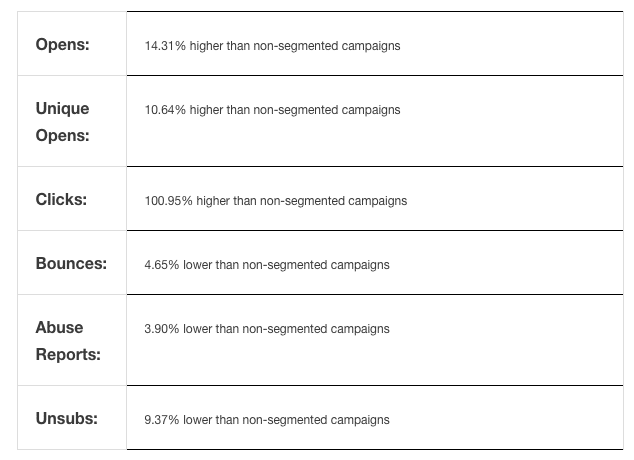


Which segments should you target?
I’d recommend starting off simple since you need to define target customers along the way. Create two different lists based on whether someone has purchased or not.
For example, if a user needs to enter an email address to place an order, put him or her on a separate list. (You can set this up automatically in your email provider.)
Create a separate segment for general traffic.
Buyers should get emails with information like:
- New products, and when you source your products
- Supplementary products to what they’ve bought
- Recommendations for similar products
Send non-buying visitors emails that encourage first purchases, like:
- Reminder emails about the products they browsed
- Discounts, promotions, and special offers
- Changes in price on products they showed interest in
Finally, there’s a huge opportunity for segmentation if you want to get a little fancier: pitching to abandoned carts.
If you’re able to track when customers leave their cart before finishing a purchase, you can segment out the people most likely to start spending with a few short emails.
This means there are huge opportunities for growth with a few simple emails.
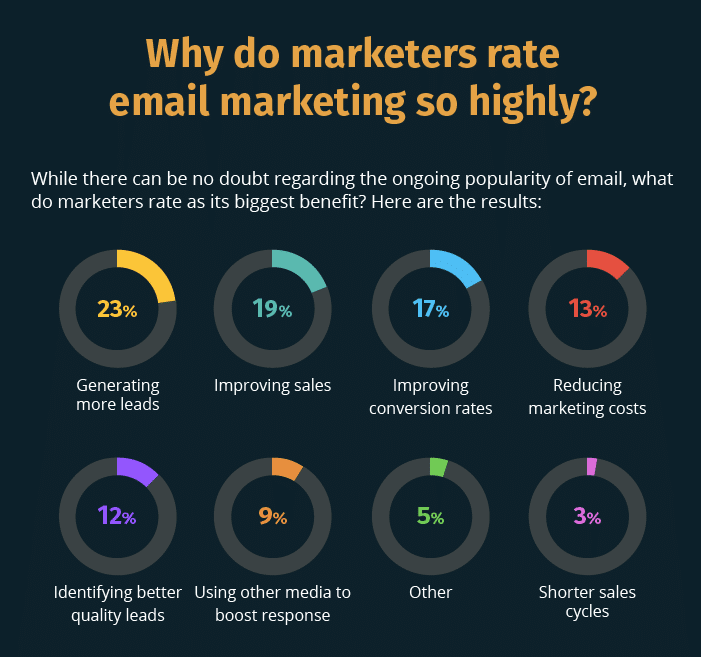



And it’s a cinch to get started.
The first thing you need to do is to learn what the potential customer has viewed and what he or she might be interested in.
For example, Argos baby products created a custom cart abandonment email that also featured recommended products.
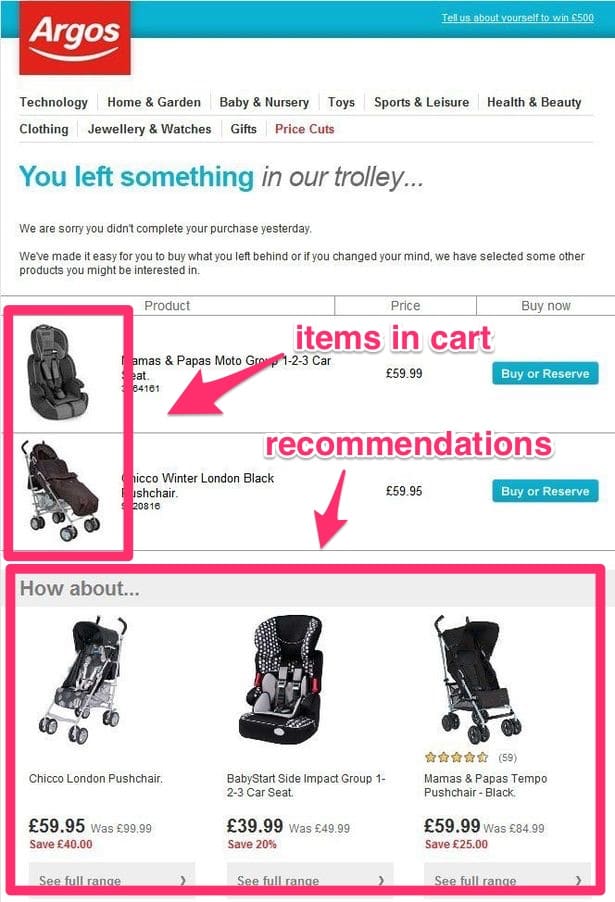


This meant they could remind customers to finish an order, and perhaps increase the order size and value as well.
And this isn’t just a random strategy a few little-known eCommerce store owners are using. Major companies like Shopify recommend setting up an abandoned cart system.
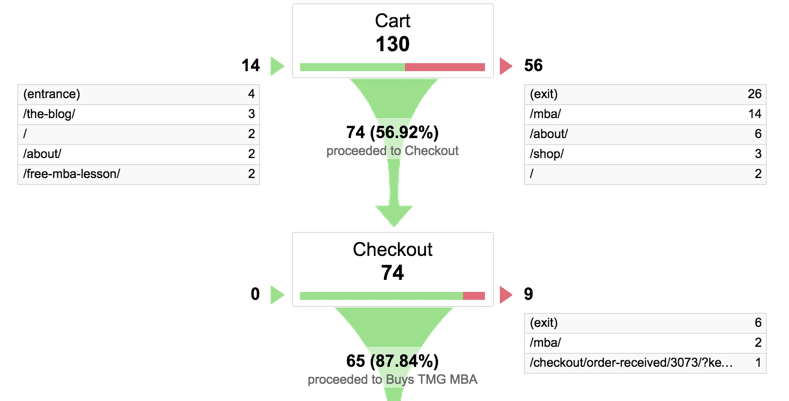


You can make huge gains with just a few simple segmentation tweaks.
Publish regular newsletters
The more regularly you send out emails, the more likely you are to get customers reading your emails.
The secret to a successful email series is to only send emails at an interval you can do consistently.
If that’s only once per week, then stick with once per week—don’t try to send daily emails and fall short of your goal.
Depending on your goals, you might find that it makes more sense to send emails as frequently as once per day.
(It rarely makes sense to send emails more frequently than this, since few subscribers have the time to read more than one email per day from you.)
Startup Product Hunt sends an email out each day, which creates a nearly automatic habit of reading their emails each day, according to Jimmy Daly at Vero.
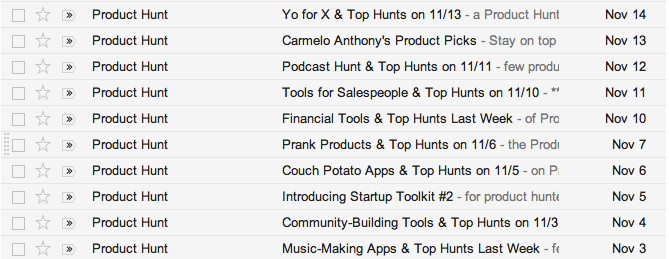


This may or may not be the right strategy for you.
But keep the golden rule of email marketing in mind: if you never send emails, you might as well not have a list. Keep your customers engaged with regular contact so they can remember you from email to email and spend more at your store.
Email drip campaigns
The next step in email marketing mastery is to send out drip emails.
These are pre-written emails that send automatically in a sequence based on subscriber action.
You can use this for a series of emails promoting a new product or introducing new subscribers to your brand. It’s a great way to position your brand each time someone else signs up to your list.
They’re different than emails you send out normally because they work together in a group. They might introduce a new buyer to your best-selling items over the course of a week, or build anticipation for a new autumn product lineup.
I recommend using numbered emails like [1/4] so subscribers know there’s reading emails in a series.
Holiday and seasonal promotions
There’s nothing like the holidays to bring you new sales and excited customers waiting to buy.
Don’t miss your opportunity. I recommend writing emails well in advance and scheduling them so you don’t forget.
It’s also a good idea to send the email at least a week before minor holidays (such as Halloween and Memorial Day), and as much as a month before larger shopping holidays (like Christmas).
This example from Joe Fresh is a simple 4th of July sale. It might not seem special, but Joe Fresh is using a holiday as a reason to encourage customers to buy something they wouldn’t have otherwise.
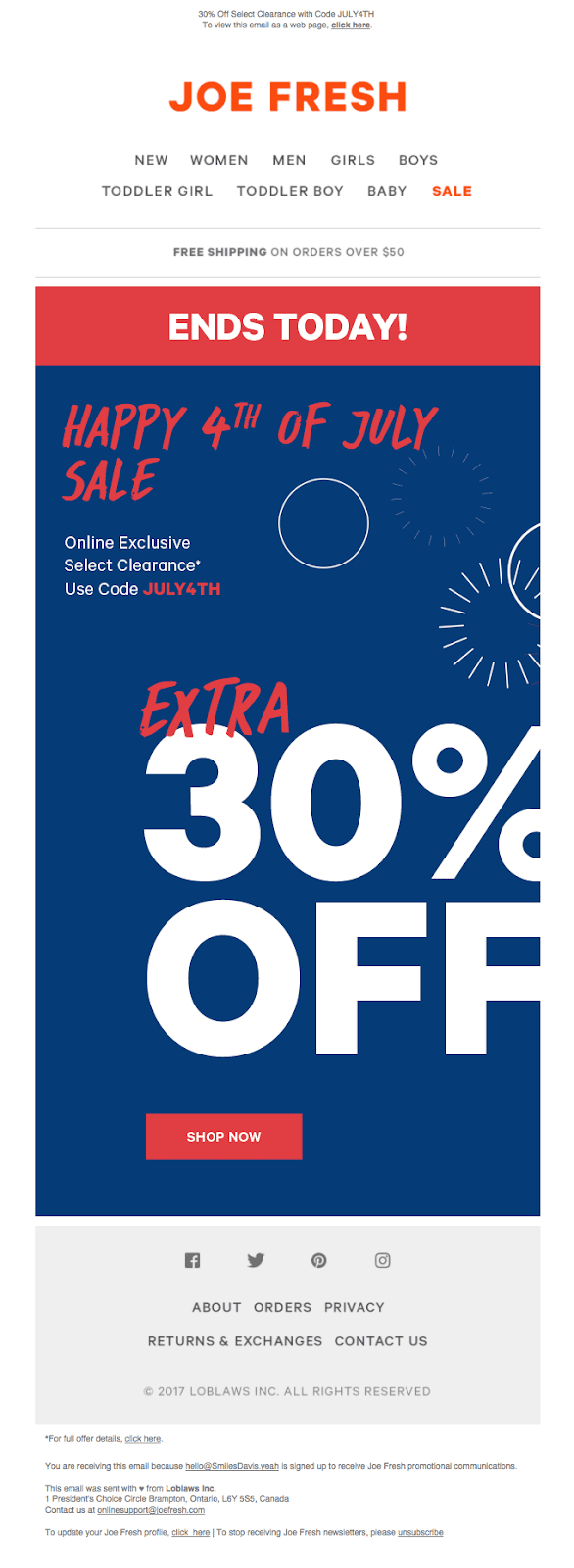


It’s a good idea to use seasonal offers to encourage more purchases like this.
Subscriber-only bonuses and discount
Your subscribers are your most loyal customers—and you need to treat them that way!
Show the love by treating your customers like gold with special bonus offers, discounts, and early previews.
It might not bring in more profit in the short-term, but you can develop serious word-of-mouth by being your customers’ best friend.
If you don’t want to offer huge discounts all the time, you can release special email-only giveaways, new bonus content, or even show photos of an upcoming product line before they hit the website.
Software product seller Carrie Dils is always treating her subscribers like her best friends, giving away free products like the book below.
It’s a great way to build relationships and grow your fanbase.
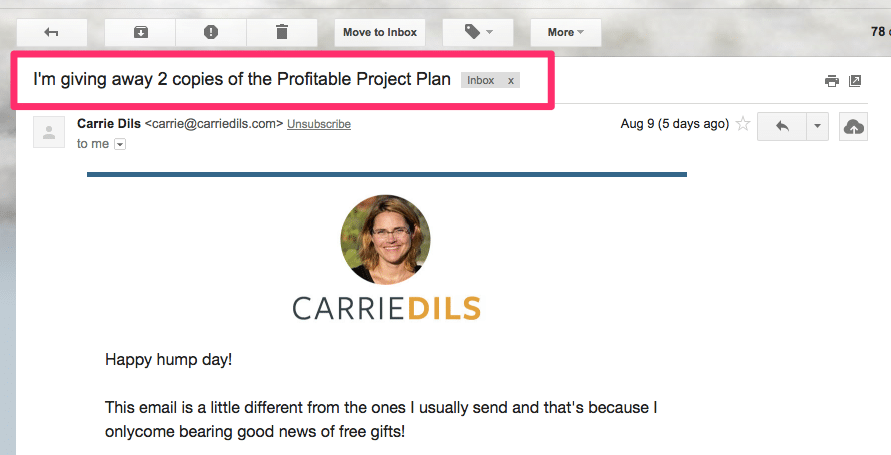


Improve your subject lines
Here’s the cold, hard, truth: email marketing is a skill.
You’ll never be able to make more money with your emails unless you work hard at becoming a better writer and marketer.
But that’s also good news! If you’re not seeing great results right now, just keep learning and perfecting your skills.
One of the most important parts of any email campaign is the subject line. This is what tells the subscriber that you have a great reason for them to open the email.
And of course, unless they open it, they won’t place any orders with your store.
Test subject lines that include the following:
- Urgency, asking users to act now
- Emojis
- Casual, friendly phrases or slang
- Questions
- Interest-grabbing topics and statements
Here are a few emails from HP.com that use some of those principles.
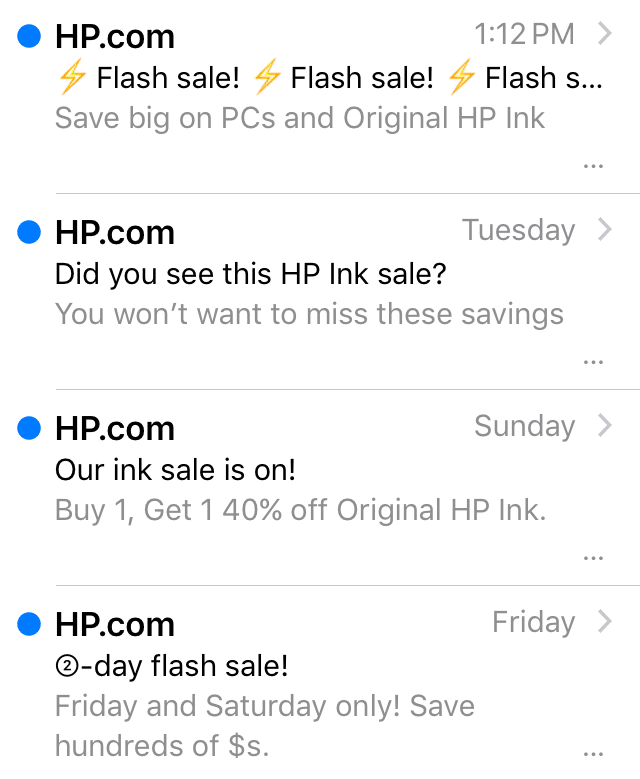


You can also include additional information in the preview text. Make sure the first few lines are attention-grabbing, too.
Building an email list to launch your store to success
So now you know how to build an email list that will help you draw in new traffic, sell more products, and build your store.
Start with promoting your list whenever and wherever possible. Use discounts, special offers, and unique bonuses to draw in buyers through your website.
Popups and other forms of notifications are great strategies for interesting visitors on your email list.
And you can also grow your list by collaborating with other influencers and getting new email addresses offline.
Next, start using your email list to engage subscribers and sell more.
You can do this with promotion offers, discounts for subscribers, and sending email drip campaigns. You should also look into list segmentation to encourage buyers to finish their purchases and encourage new trips to your eCommerce store.
As you create a business plan for your eCommerce store, include email marketing as a key way to drive traffic and customers.
Finally—keep testing and improving! Email is a skill, and it’s one you can learn to catapult your sales.
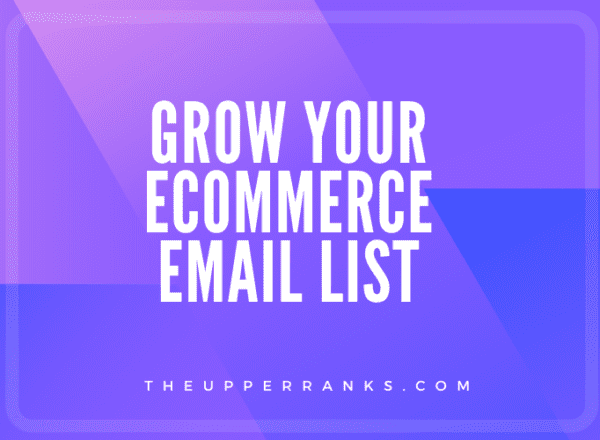
Comments